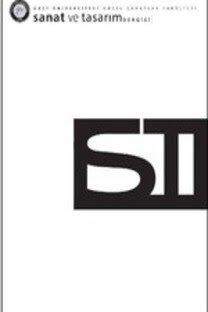151 Yaşındaki “Ali̇ce Harikalar Diyarında” Serüvenine İllüstratif Bir Bakış
Bu araştırmada, dünya çocuk edebiyatının en tanımış klasiklerinden birisi olan, Lewis
Carroll tarafından yazılan “Alice Harikalar Diyarında” (Alice’s Adventures in Wonderland) adlı kitabın (1865), ilk yayınlandığı günden bu yana vazgeçilmez bir parçası haline
gelen illüstrasyonlar ve bunları yaratan illüstratörler bağlamında, üretildikleri coğrafya,
kültür ve dönem çerçevesinde özgün üsluba sahip farklı çizerler üzerinden irdelenecektir.
Seçilen illüstratörlerin farklı dönem ve kültürlerden olmasına dikkat edilmiştir. Derleme
yöntemiyle oluşturulan araştırmanın amacı, aynı eserin farklı dönem, kültür ve üslupların illüstrasyonları nasıl etkilediği, metinleri görselleştirmede kullanılan ortak veya farklı
unsurların ortaya çıkarılmasıdır.
Anahtar Kelimeler:
Alice Harikalar Diyarında, İllüstrasyon, Lewis Carroll
Illustrative Perspective of the 151 Years Old “Alice Adventure in Wonderland”
The illustrations in Alice’s Adventures in Wonderland (1865), one of the most recognizable classics of children’s literature in the world written by Lewis Carroll (1865) have been
an indispensable part of the book since its first publication. In this study, the illustrations
will be examined in terms of geography, culture and period of production considering
their illustrators, each having unique styles, who are selected from different periods and
cultures The study, in which the compilation method was used, aims to reveal the common
or different elements used in visualizing the texts as well as how different periods, cultures
and styles influenced the illustrations of the same book.
Keywords:
Alice’s Adventures in Wonderland, Illustration, Lewis Carroll,
___
- Brooker, W. (2004). Alice’s Adventures: Lewis Carroll in Popular Culture, Londra: A&C Black.
- Caples, G. (2014). Retrievals. United States: Wave Books.
- Carroll, L. (2010). Alice Harikalar Diyarında, İstanbul: Bordo Siyah Klasik Yayınlar.
- Druker, E. (2007). Staging the Illusive: Self-Reflective Images in Tove Jansson’s Novels. In K. McLoughlin & M. L. Brock, (Ed.), Tove Jansson Rediscovered. (75-85). Newcastle, UK: Cambridge Scholars Publishing.
- Druker, E. (2011). Picture Book as Conceptual Space: Spatial Transformation in Tove Jansson’s Book about Moomin, Nymble and Little My. In L. Weldy, (Ed.), Tove Jansson Rediscovered. (208-221). Newcastle, UK: Cambridge Scholars Publishing.
- Gale, T. (2006). Zwerger, Lisbeth 1954 – style citations of electronic sources. Retrieved December 2, 2015, from http://www. encyclopedia.com/doc/1G2-3546000091.html
- Gilbertson, I. (2005). Zwerger Lisbeth. In B. Z. Bernice, D. G. Person, (Ed.), The Continuum Encyclopedia of Children’s Literature - A Giniger book. (850). England: A&C Black.
- Hardman, R. (2015). Salvador Dalí Illustrated Alice in Wonderland and Yale’s Beineke Library Has a Limited Edition – style citations of electronic sources. Retrieved December 11, 2015, from http://wnpr.org/post/salvador-dal-illustrated-alice- wonderland-and-yales-beineke-library-has-limited-edition#stream/0
- Hudson, D. (1974). Arthur Rackham-His Life and Work, Canada: Heinemann Publishing.
- Lacy, N., Ashe, G., Ihle, S., Kalinke, M. & Thompson, R. (2013). The New Arthurian Encyclopedia Updated Paperback Edition. New York: Routledge Publishing.
- Lehtonen, M. (1998). Children’s Literature in Finland. In G. C. Schoolfield, (Ed.). History of Finland’s Literature (4th ed.) (740-748). USA: U of Nebraska Press.
- Leitch, T. (2010). The Ethics of Identity. In C. Crane & D. Cutchins, (Ed.), Adaptation studies : new approaches (61-77). Madison N.J: Fairleigh Dickinson University Press.
- Leppanen-Guerra, A. P. (2011). Children’s Stories and “child-time” in the Works of Joseph Cornell and the Transatlantic Avant-garde. USA: Ashgate Publishing.
- McAra, C. (2010). Surrealism’s Curiosity: Lewis Carroll and the Femme-Enfant, Papers of Surrealism, 9, 1-25.Menges, J. A. (2013). Alice Illustrated: 120 Images from the
- Classic Tales of Lewis Carroll. Mineola, New York: Dover Publications, Inc.
- Nichols, C. (2014). Alice’s Wonderland: A Visual Journey Through Lewis Carroll’s Mad, Mad World. England: Race Point Publishing.
- Oittinen, R. (2002). Translating for Children - Children’s Literature and Culture. New York: Routledge Publishing. Pelin Kırca Hakkında. (b.t.). 8 Kasım 2000, http://pelinkirca.com/index.php?/about/.
- Popova, M. (2014). Tove Jansson’s Rare Vintage Illustrations for Alice in Wonderland – style citations of electronic sources. Retrieved November 30, 2015, from https://www.brainpickings.org/2014/06/30/tove-jansson-alice-in-wonderland/
- Popovic, A. Z. (2011). From Books the Screen: The Consequences of Transferring Children’s Books to Cartoons, In L. Weldy, (Ed.), Crossing textual boundaries in international children’s literature. (156-164). Newcastle upon Tyne, UK: Cambridge Scholars Publishing.
- Roberts, J. M. (2010). Avrupa Tarihi, (F. Aytuna, Çev.). İstanbul: İnkilap Yayınları. Urgan, M. (1991). İngiliz Edebiyatı Tarihi III. İstanbul: Altın Kitaplar Basımevi.
- Westin, B. (2007). A Painter’s Reflection: The Self-Representational Art of Tove Jansson. In K. McLoughlin & M. L. Brock, (Ed.), Tove Jansson Rediscovered. (5-14).
- Newcastle, UK: Cambridge Scholars Publishing.
- Vilaseca, E. (2008). Cutting-Edge Patterns and Textures. ABD: Rockport Publishers.
- Yoshimoto, M. (2005). Into Performance: Japanese Women Artists in New York. ABD: Rutgers University Press.
- Zipes, J. (2015). Zwerger Lisbeth. In J. Zipes, (Ed.), The Oxford Companion to Fairy Tales-Oxford Companions Series. (668). England: Oxford University Press.
- Zuck, V. (2007). Tove Jansson Rediscovered. Newcastle: Cambridge Scholars Publishing, 249.
- ISSN: 1308-2264
- Yayın Aralığı: Yılda 2 Sayı
- Başlangıç: 2015
- Yayıncı: Ankara Hacı Bayram Veli Üniversitesi
Sayıdaki Diğer Makaleler
Şan Tekniğinde Doğru Nefes Almanın Önemi
Renk, Dekor ve Form Açısından 20. Yüzyılda Avrupa’da Üretilen Endüstriyel Seramik Çaydanlıklar
Öznur YILDIRIM, Sadettin AYGÜN
İstanbul Hıristiyan Mezarlıklarındaki Hayvan Sembolleri
Sibel SEVİM, Saime HAKAN DÖNMEZER, Ezgi HAKAN MARTİNEZ, Cemalettin SEVİM, Nilgün ÇÖL
Visconti’nin “Venedik’te Ölüm” Filminde Metinlerarasılık ve Müziğin (Baş)Rolü
Fagot Eğitiminde Kamış Yapımının Önemi
151 Yaşındaki “Ali̇ce Harikalar Diyarında” Serüvenine İllüstratif Bir Bakış
